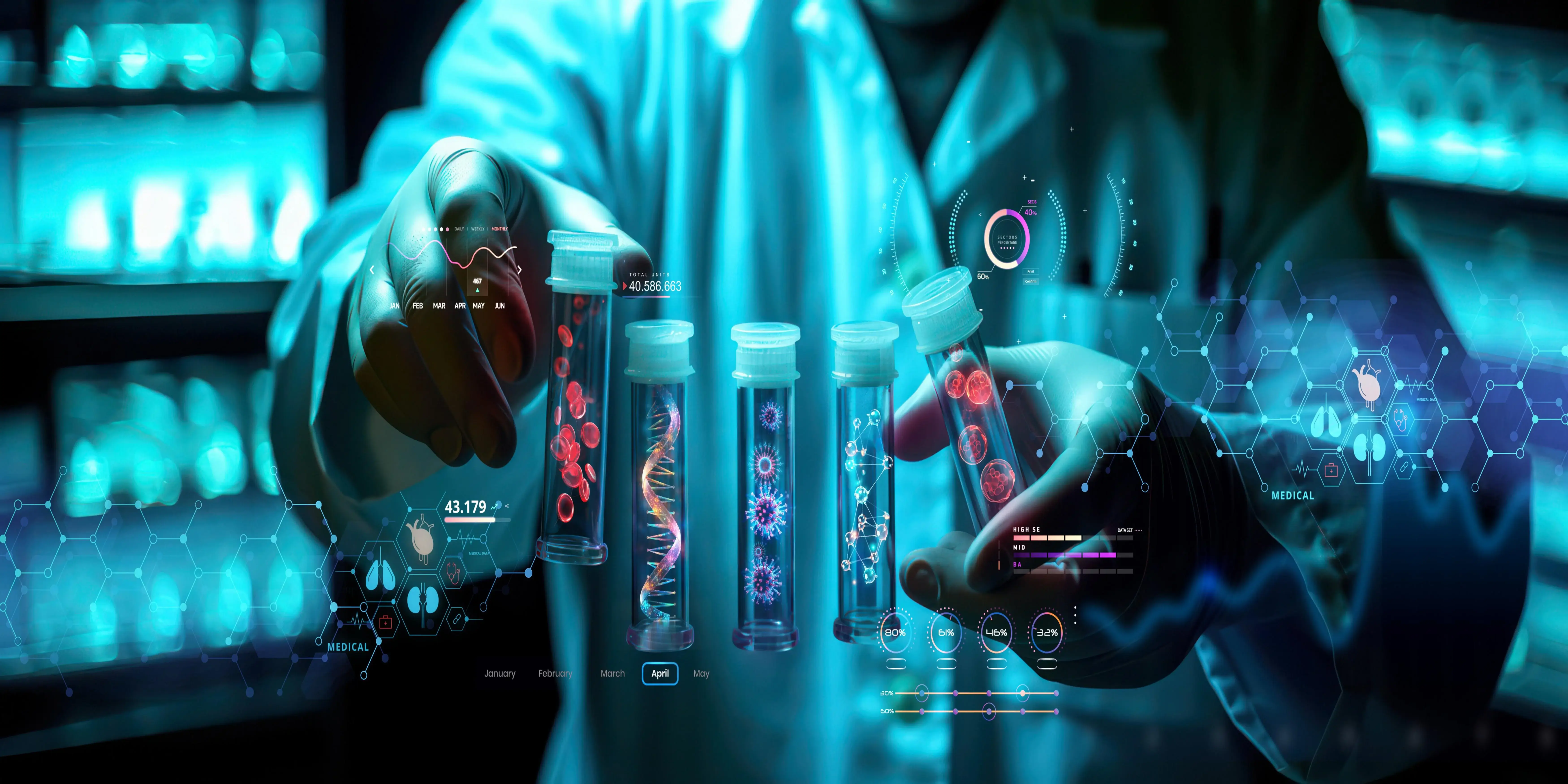Rare diseases, also referred to as orphan diseases, are conditions that affect a relatively small percentage of the overall population. However, while the prevalence rate of individual rare diseases is low, there are over 7,000 known rare diseases that collectively impact millions of lives
The Vital Role of Rare Disease Biobanks
A biobank is an organized repository that collects, stores, processes and distributes biospecimens like blood, plasma, DNA, tissue, and other samples for the purpose of medical research and advances. For the rare disease community, research biobanks provide researchers access to samples that would otherwise be nearly impossible to obtain due to small, widely dispersed patient populations.
Key Functions of Rare Disease Biobanks
Long-Term Storage of Samples
Enables samples to be preserved for future research uses over many years to come. This helps accumulate sufficient samples sizes for research studies.
Sustainable Sample Collection:
Having a central biobank dedicated to sample collection facilitates consistent, ongoing accrual of samples rather than one-off collections.
Diverse, Well-Documented Samples:
Support varied research needs by collecting multiple sample types and annotations with detailed medical histories of patient donors.
Streamlined Access:
Allow researchers to efficiently obtain rare disease biospecimens that would be extremely difficult and costly for individual researchers and labs to source independently.
Challenges in Rare Disease Biobanking
While there is tremendous potential value in biobanks for rare disease research, there are also unique challenges that must be navigated in their development and management, including:
Scarce, Dispersed Samples:
The limited number of patients and wide geographic spread makes continual accrual of biospecimens difficult over time
Variability Within Rare Diseases:
Each rare condition can display distinct mutations and a spectrum severity, complicating analysis. Very large sample sizes are needed.
Sample Viability/Integrity
Ensuring samples remain viable for future use with standardized protocols across collection sites.
Privacy and Ethical Oversight:
Protecting patient privacy and adhering to ethical regulations becomes more difficult with a decentralized contributor network.
Sustainability and Funding
Obtaining consistent funding to maintain the biobank, implement innovations, and facilitate sample collection coordination.
Innovative Approaches to Enhance Rare Disease Biobanks
To overcome obstacles in rare disease biobanking, new innovative models and technologies are now emerging.
International Collaboration Networks:
Expanding collaboration across institutions, labs, hospitals/clinics, and borders facilitates wider sample collection, sharing, and research data exchange. Global partnerships can help achieve sufficient sample sizes to power research statistically. International coordination also aids identification of new patients
Use of Technology and Automation:
Automating aspects of sample handling procedures enhances consistency, efficiency, tracking capabilities, and sustainability. Some leading-edge options include automated sample storage and retrieval systems, genomic analysis automation platforms, blockchain-based logging of chain-of custody, and cloud databases. Digital networks also enable decentralized contributors to collaborate seamlessly.
Community Building and Participation:
Proactively engaging patient advocacy groups and families as active contributors and advisors in biobank programs promotes ongoing community buy-in critical for rare disease efforts. This also builds patient trust, expands public and private funding opportunities, and may inform policies to reduce patient participation barriers.
Novel Research Models:
New models such as cross-disease analysis, longitudinal studies over the lifespan, metabolomics evaluations, and integration of environmental exposure data are expanding research applications of rare disease biobanks more innovatively than the past. Having extensive medical histories longitudinally through patient lives drives powerful research not possible using one-time sample donations from healthy donors.
Spotlight on Impactful Rare Disease Biobank Initiatives
Many innovative and collaborative rare disease biobank initiatives have launched recently to empower more impactful research progress.
Genomics England Rare Diseases Programme:
Genomics England operates a pioneering whole genome sequencing effort, already sequencing over 200,000 genomes. Their Rare Diseases Programme enables undiagnosed patients with over 7,000 known rare disorders to get genomic diagnoses. Researchers globally can access these rare disease data for approved studies, catalyzing research.
Blood PAC Rare Blood Disease BioBank:
Launched in 2020 by a coalition of leading medical research institutes, this multicenter bio-repository collects liquid biopsies from bone marrow failure disorder patients. Their goal is to support investigation of underlying biological mechanisms driving these deadly diseases using a unified, collaborative network model across institutions.
Medizinische Hochschule Hannover Biobank Alliance:
This extensive German biobank network consolidates regional healthcare facilities into a centralized biorepository serving rare disease research needs since 2009. Their standardized protocols, strict ethical oversight, and ongoing community engagement initiatives drive high-impact rare disease investigation across Germany.
Rarease Project:
Rarease launched in 2020 as a first-of-its kind initiative pooling metabolomics data from 50 European laboratories and biobanks to power new discoveries about pathophysiology of rare diseases. Metabolomics investigates disruptions in metabolic enzymes, a molecular origin for many rare genetic conditions, uniquely enabled by integrating datasets across labs and sample collections.
The Future of Rare Disease Research with Biobanks
Rare disease patients still face major difficulties obtaining accurate diagnoses and finding treatments or cures tailored to address the spectrum medical complexities of their conditions.
Research biobanks serve a pivotal role in overcoming current barriers rare disease communities contend with by making bio-specimens from smaller patient subgroups more accessible to global research efforts.
Optimizing Personalized Medicine:
Integrating research biobank datasets on genomics, metabolomics, treatments, and outcomes can reveal predictive patient phenotyping tying specific biomarkers and genotypes with symptoms and progression variability between rare disease patient populations. This drives more precise, effective personalized therapeutic interventions tailored to each patient's molecular profile and condition manifestations.
Multi-Omic Analyses as Standard Practice:
Converging multi-omic data on the genome, epigenome, transcriptome, proteome, metabolome paints a fuller picture of interconnected molecular players underlying disease path physiology and responsiveness to treatments. Integrating these multi-omic analyses using pooled data from multiple biobanks advances detection of biomarkers and drug targets better informing individualized treatment.
Accelerated Research with Larger Sample Sizes:
When researching conditions affecting only a few individuals worldwide, amassing sample sizes substantial enough to derive meaningful statistics remains extremely difficult without relying on unified biobank networks making biospecimen collection scalable. Larger volumes of rare patient samples speed identification of new genomic factors and strengthen causal evidence distilled from past medical histories.
Conclusion
Rare disease communities face immense challenges in their journeys navigating under-diagnosed conditions with limited treatment options and scientific understanding of root pathophysiological causes. Leadership from innovative biobank initiatives leveraging connected networks, community partnerships, automation, and multi-omic profiling provide reason for hope, expanding biosample availability for global research that promises to unravel mysteries of rare diseases at a uniquely rapid pace moving forward. The future looks brighter with increasing research momentum and collaboration accelerating diagnosis, treatment interventions, and cures for thousands of rare conditions through insights only made possible using these meticulously aggregated collections of patient samples.



